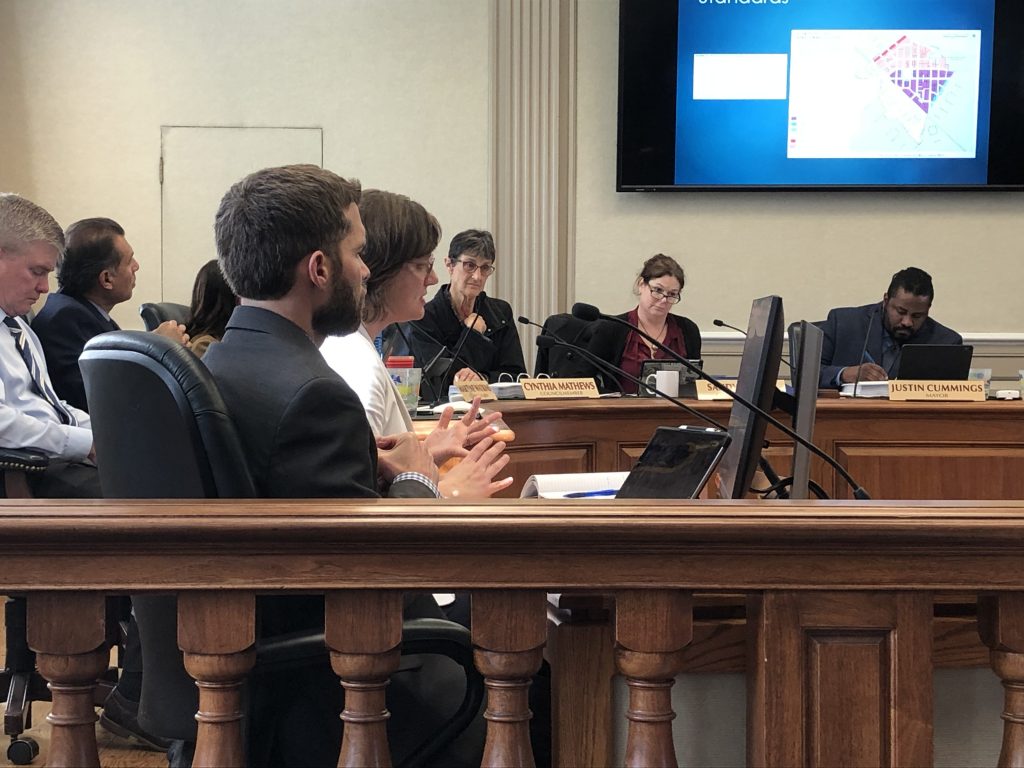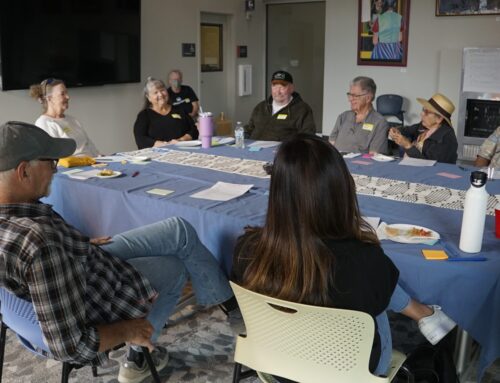
SANTA CRUZ >> Santa Cruz is now the third city in the U.S. to reduce enforcement of illegal psychoactive drugs and plants, after Denver and Oakland.
Tuesday, the Santa Cruz City Council unanimously approved a resolution that makes the investigation or arrest of people 21 and older who have, use or cultivate entheogenic plants, fungi and drugs a low priority for city police.
Entheogenic plants and drugs are also known as psychedelics. Federal and state law do not allow people to have, use or cultivate these drugs. These plants and their psychoactive ingredients include: ayahuasca and DMT, peyote cactus and mescaline, Psilocybe mushrooms and psilocybin, and iboga, which contains ibogaine.
Sale, use and cultivation of these drugs to and by minors would “require appropriate investigation” by police, according to the resolution.
The chambers were filled with mostly younger people, who cheered, high-fived and hugged after the vote. Several held handmade signs, such as one that read “DARE to Decriminalize!” with multicolored mushrooms drawn underneath.
The roughly 20 people who spoke were in favor of reducing enforcement, citing medical benefits of these plants and drugs. Some said the resolution didn’t go far enough.
Alli Feduccia is a scientist at Project New Day, a recently-founded local nonprofit foundation focusing on using psychedelics to treat addiction. She said psychoactive drugs and plants are not addictive.
“We have a good understanding of when these substances are taken with careful preparation and good intention, that they can be safely taken within a community setting,” Feduccia said.
Aaron Newsom, a veteran, said he returned from Afghanistan with PTSD. He found that cannabis helped him. With others, he started the Santa Cruz Veterans Alliance to increase access to medical cannabis.
“To treat the root of mental health, we need access to stronger plants and mushrooms,” Newsom said.
Before the vote, Councilmember Martine Watkins said she wanted to make sure the resolution did not send the wrong message to youth.
“This is not a message to them to start using… This is not for our kids,” Watkins said.
The council amended the resolution to support prevention among youth and working with education partners to monitor for use of these drugs among youth. Also, the council changed the wording of the proposed resolution to clarify that enforcement of laws against cultivation of these plants would also be a low priority.
Mayor Justin Cummings said that without that clarification, the resolution may encourage a black market for the drugs. Also, if people can cultivate plants, they wouldn’t have to worry if the drugs were laced or fake, he said.
“They know exactly what they’re producing. They know exactly what they’re taking,” Cummings said.
POLICE PERSPECTIVE
Santa Cruz Police Chief Andy Mills has said that he does not oppose the resolution since he worked with councilmembers to “tone it down.” An earlier version would have made the drugs legal rather than reducing enforcement.
In a November interview with Santa Cruz Local, Mills said that the parts of the resolution that allow for medically-supervised or spiritual use of the drugs “make sense.” Still, he said he personally wasn’t in favor of other parts of the resolution.
“How do we regulate people that are driving under the influence? And what are the symptomologies that allow us to make an arrest for that? How do we test for it? My experience has been over 42 years of policing is that occasionally we have to fight people under the influence of hallucinogenics because some people react differently, especially if they don’t know how to dose it correctly,” Mills said in November.
He said these drugs are not a significant issue for the police department. Police said they arrested a person in February 2019 on suspicion of selling hallucinogenic mushrooms and other drugs at UC Santa Cruz through a mobile app.
IN OTHER NEWS
Council ponders future housing sites
The city council is grappling with the question of where dense housing should go, as the council steps away from an earlier plan that would have placed it near busy intersections on the Eastside and Westside.
An estimated 1,600 future housing units could be moved from Water Street and Soquel Avenue, if the city council decides to move in that direction. Tuesday, city planning staff presented a list of 23 options for how the city could redistribute those units, including eliminating single-family zoning to allow duplexes, triplexes and fourplexes city-wide, and increasing density along some areas of West Cliff Drive.
City Senior Planner Sarah Neuse said that the list was preliminary and represented ideas that the staff culled from the community, the media and other cities. The staff did not recommend any of the options, and the ideas had not been analyzed. The staff wants the community to be involved in the decision.
No action was taken on the ideas except to refer the entire report to the planning commission for its recommendations “regarding options for moving forward with the reconciliation process.” That could include a broader look at effects on the local economy and housing development. That motion passed unanimously.
State law prevents cities from reducing planned density. Cities that reduce housing density in one area must simultaneously increase it by the same amount in another area.
The driving force in the city’s effort to plan for denser housing sites is the demise of the Corridor Plan.
The city council killed the Corridor Plan last year with a 4-3 vote. The Corridor Plan would have updated the city’s zoning to match the higher density called for in the city’s General Plan. It would have increased housing density near busy intersections along Water Street, Soquel Avenue, Mission Street and Ocean Street.
Instead, the city council voted to “resolve the existing inconsistencies” between the General Plan and the zoning along the city’s busiest streets in a way that holds preservation of neighborhoods and businesses as the top priority.
The Corridor Plan was controversial, especially with Eastsiders, who did not want to see more density on Water Street and Soquel Avenue. The plan had been put on hold in 2017 before its demise in August.
- Oversight of police use of surveillance technology: Councilmembers Drew Glover, Chris Krohn and Mayor Justin Cummings wrote a draft law that would increase oversight of the police department’s use of surveillance technology, such as facial recognition. The city council voted unanimously to send the draft law to the police chief and city attorney for their review. The draft would return to the Public Safety Committee for a second review. The city council will consider the policy again as early March. Members of the local chapter of the ACLU said during public comment that the draft law didn’t go far enough. The city council directed the staff to meet with ACLU members.
- Downtown alcohol rules update: In 2000, the city council prohibited downtown businesses from selling alcohol for off-site consumption. Businesses got a 20-year amnesty before the law would be enforced.
- Tuesday, the city council updated that law, limiting alcohol sales from 7 a.m. to midnight, and prohibiting single-serve alcohol except beer (but including malt liquor).
- The update also allows businesses to sell alcohol for off-site consumption if those alcohol sales represent a small portion of the business, such as with Trader Joe’s and CVS. Bonesio Liquors, at Pacific Avenue and Laurel Street, would need to change its practices to comply with the law.
- The city council unanimously approved the update.
- Newell Creek Dam project advances: Tuesday, without controversy, the city council approved the plans for the Newell Creek Dam inlet/outlet replacement. It’s a $61.5 million project, and “will be one of the most expensive and technically challenging projects in the water department’s history,” said Project Manager Leah VanDerMaaten on Tuesday. The inlet/outlet is important because it controls how much water enters and leaves the Loch Lomond Reservoir, a crucial storage site for drinking water for the city.
- Access plan for Cowells and Main beaches approved: The city council continued the curfews for Main and Cowells beaches, which were set to expire. The dry sand parts of the beaches will be closed from midnight to an hour before sunrise, though people will be allowed to cross the sand to access the water at any time of day. The curfews are meant to limit camping and illegal activity on the beach. Last year, when a homeless camp appeared on Main Beach, the city council created a six-month curfew in response to some public outcry. The council voted 5-1, with Krohn against and Glover absent.
- City leaders to begin negotiation with local union council for collective bargaining agreements: The city council voted 6-0 to have city staff work with the Monterey Bay / Santa Cruz Counties Building and Construction Trade Council to create a community workforce agreement, also known as a project labor agreement. These types of agreements could require union participation to work on a project. City leaders want to use these agreements for municipal projects, such as the Newell Creek Dam project. The idea would be to prioritize local labor. During public comment, more than a dozen union members spoke in favor of the proposal. Swenson development project manager Jessie Bristow was one of two people who objected. He said these types of agreements could drive up costs, and the union labor pool is small in Santa Cruz County. Councilmember Martine Watkins was absent for the vote.
- City council appoints advisory body members: The city council filled several seats on the volunteer advisory committees and commissions that serve the council.
- Arts Commission: Yvonne Byers, Linda Cover, Marilyn Kuksht.
- Commission for the Prevention of Violence Against Women: Beth Thurman.
- Downtown Commission: Enda Brennan & Joe Ferrara.
- Equal Employment Opportunity Committee: Nancy Degnan.
- Historic Preservation Commission: Dennis Diego & Albert Narath.
- Parks & Recreation Commission: J.M. Brown.
- Planning Commission: Cyndi Dawson and Sean Maxwell. (Greg Pepping and Robert Singleton are now off the commission.)
- Sister Cities Committee: Chandra Duffy, Leo Jed, Michele Peregrin.
- Transportation and Public Works Commission: Candace Brown, Jonathan Coleman and Ron Goodman.
- Water Commission: Doug Engfer and Alejandro Páramo.
Editor’s note: This post has been updated to correct Mayor Justin Cummings’ title.
Questions or comments? Email [email protected]. Santa Cruz Local is supported by members, major donors, sponsors and grants for the general support of our newsroom. Our news judgments are made independently and not on the basis of donor support. Learn more about Santa Cruz Local and how we are funded.
Kara Meyberg Guzman is the CEO and co-founder of Santa Cruz Local. Prior to Santa Cruz Local, she served as the Santa Cruz Sentinel’s managing editor. She has a biology degree from Stanford University and lives in Santa Cruz.





